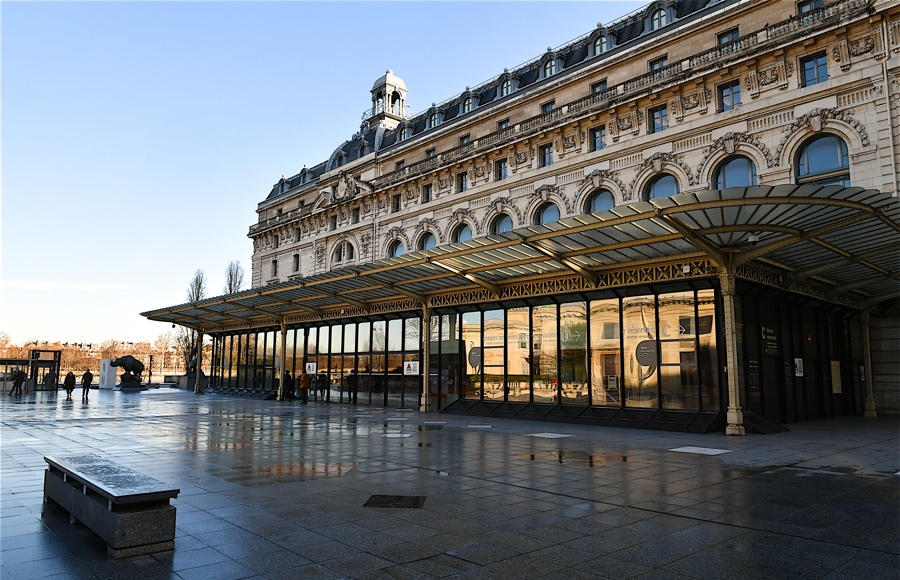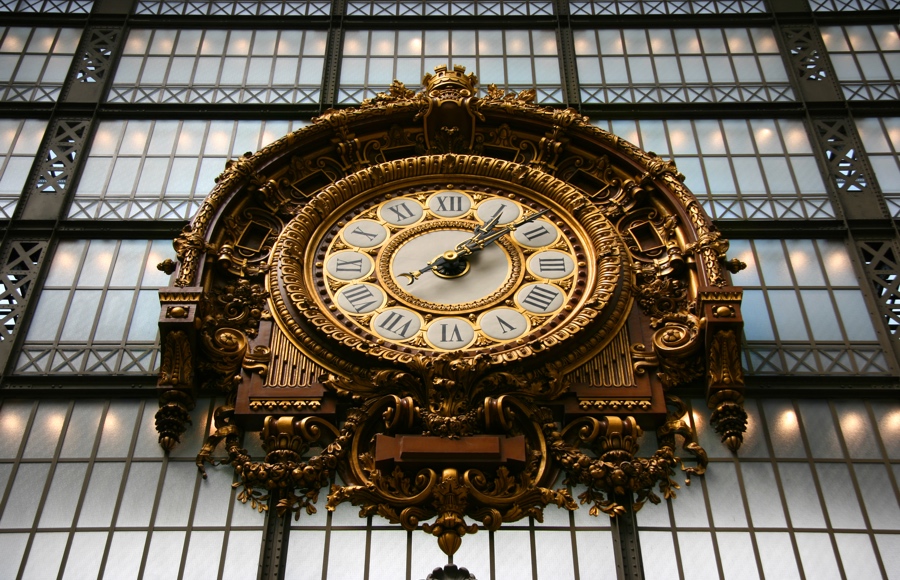Musée d'Orsay: hostory, description and art exhibitiohs
Fans of painting, especially impressionists, must visit the Orsay Museum in Paris. The largest exposition is located in a three-storey building, which used to be a railway station. The collection includes paintings and sculptures by European masters of the middle of the 19th and early 20th centuries, filling the gap in the history of painting between the Louvre and the Georges Pompidou Centre.
Musée d'Orsay occupies the building of the station of the same name and the adjacent hotel. The d'Orsay station was built for the 1900 World's Fair to ease the pressure on other railway junctions in Paris and the surrounding area, while awaiting the arrival of thousands of visitors. A plot of land was allocated for development in the heart of the capital, on the left bank of the Seine, opposite the Louvre. The technology was the most innovative: d'Orsay became the world's first electrified station.
After the exhibition, however, the train traffic here dropped by several times and by the forties of the 20th century the station was empty. The building was abandoned until 1971, when the need to demolish it was seriously discussed, but Georges Pompidou himself joined the station and in 1980 work began on the reconstruction of d'Orsay and its transformation into a museum. The reason for this was also the fact that the Louvre's funds literally broke down from unreleased works. The D'Orsay Museum opened six years later and today is one of the most popular museums in Paris, with an impressive list of masterpieces and a host of interesting exhibitions.

The museum's exposition begins on the ground floor, under a huge vault of glass and steel, then moves on to the upper level of the premises and finally ends at the middle level, where you can see the central gallery.
You can also visit other pleasant places of the museum: a café on the top level with an open terrace and a beautiful view of Montmartre through the huge railway station clock. And on the middle level - a magnificent, gilded restaurant and tea room. Tea with cake here will cost you 10 euros.
The history of the museum collections begins with the Museum of Luxembourg, founded in 1818 by Louis XVIII, which were supposed to present the works of contemporaries to the public. According to the King's decree, after ten years from the death of the artist, whose works have received worldwide recognition, his paintings are automatically transferred to the Museum of Luxembourg. Later on, the collection began to be enriched by the donated paintings, acquisitions at exhibitions, etc. - And today the funds have more than 4000 works of art.
A luxurious collection of Impressionist and post-impressionist works is the main pride of the Musee d'Orsay. Among the masterpieces are Eduard Manet's Breakfast on the Grass and Olympia, Claude Monet's Cathedral of Rwanda series, Renoir's Ball in Moulin de la Galette, Ser's Circus, Van Gogh's self-portrait, works by Signac, Sisley, Toulouse-Lautrec, Degas, Coro, Courbet, Pissarro, Engra and many others.
Painting is not the only thing you can enjoy at the Musee d'Orsay: the sculpture and applied arts collections here are also outstanding. Rodin's works (e.g. the famous "Bronze Age"), Camilla Claudel (Maturity) and the magnificent Degas sculpture "Little Dancer of the Fourteen Years" are worth to see. The collection of interior items is represented by carved wall panels made of precious woods, a collection of dishes, stained-glass windows and furniture.

Exposition of the ground floor of the Orsay Museum
On the ground floor, in the hall located under a huge glass roof, are situated numerous sculptures. On both sides of the hall there are paintings to discover. This floor is dedicated to works of art created before 1870. From the samples of sculpture of the middle of the XIX century in the central gallery, among others, there is the sculpture of Ugolino, the work of Carpo, showing Count Ugolino from the "Divine Comedy" of Dante.
Another work by Carpo is the author's plaster version of the fountain group "Four parts of the world supporting the celestial sphere". The bronze original of which can be seen as the foundation of the fountain in the Luxembourg Garden. Near are the unusual polychrome busts of black Africans made by Charles Cordier in bronze and colored stone.
On the southern side of the ground floor, on the Lille terrace, the first rooms (1-3) feature paintings by Engra and Delacroix, whose main works are situated in the Louvre. Also, there are classical works by artists of the mid-19th century. Then (rooms 11-13) there are interesting works by Puvis de Chavanne, Gustave Moreau and the young Degas.

Upper level: Impressionism and post-impressionism
To continue chronologically through the paintings, go to the top level, where the halls look more like art workshops under the roof. First, you'll find a private collection presented to the Orsay Museum by the diligent collector and art historian Moro Neton (Room 29). It includes some of the most famous examples of Impressionism, including Maki and Claude Monet's "Breakfast on the Grass".
In order to further appreciate the power of impressionism, you will have to fight all the time with the insistent feeling of something very familiar and recognizable - this is "Absinthe" Degas, "Ball at the Moulin de la Galette" Renoir, "Woman with an umbrella" Monet. At the exhibition in the "Salon" that year, the picture was not taken.
Also here are "Absinthe" Degas, "Ball in Moulin de la Galette" Renoir, "Woman with an umbrella" Monet. In halls 30-32 you will see the works of Renoir, Sisley, Pizarro and Monet. Many of these works were created on the banks of the Seine. Less typical paintings include images of Degas dancers. The painting "The Cradle" of Bertha Morizo, the first woman that joined Impressionism.

The middle level collection of the Orsay Museum
Going to the middle level, try not to miss Kaganovich's collection (rooms 49 and 50) - small, but great post-impressionism collection. On the middle level, there is a the picturesque part of the exposition with works of Vuillard and Bonnard (rooms 71 and 72). It is a little bit hidden from the public by the exorbitant sculpture of a polar bear by Pompon.
Vuyar and Bonnard began their careers as members of the art nouveau group known as Nabi (The Prophets); in Vuyard's decorative panel "Community Gardens" (1894) and Bonnard's painting "Party in Croquet" (1892) clearly felt the influence of Japanese painting. Impressionist attention to light really feels here, the colors are both muted and saturated at the same time.
The Seine terrace (Halls 55-58) shows lesser-known works of the late 19th century, including some large-format, epic, naturalistic works, such as Detaya's Dream (1888), Cain by Cormon (1880) and the famous decadent Portrait of Marcel Proust by Jacques-Emile Blanche.
In 2011, new halls were opened in the museum, in particular, the Van Gogh Hall, where 24 paintings of the famous artist were collected.



